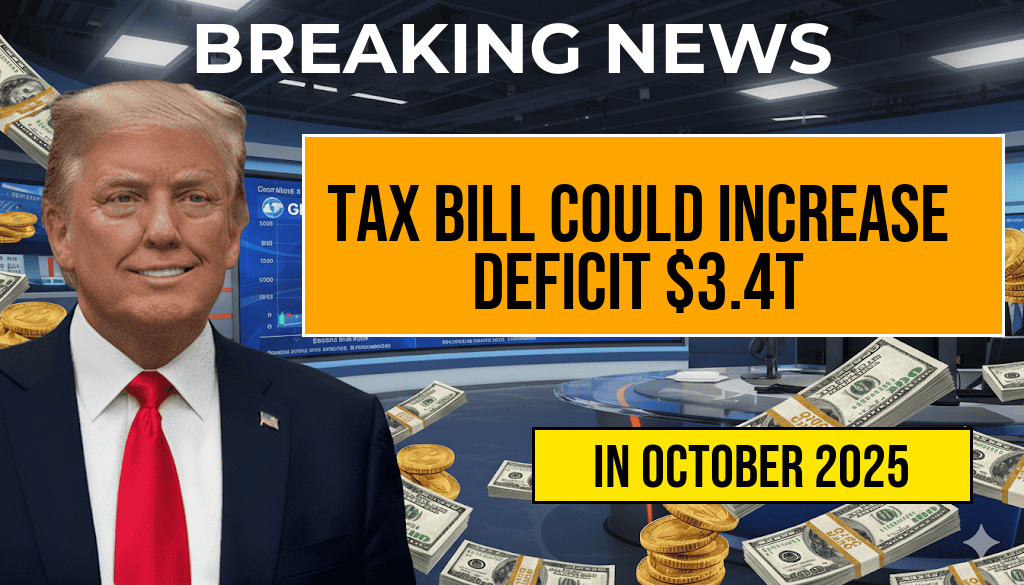Amid mounting scrutiny from fiscal watchdogs and congressional leaders, the proposed legislation known as the “One Big Beautiful Bill” has ignited concerns over its potential to substantially inflate the national deficit. Analysts warn that if enacted as currently drafted, the bill could add as much as three point four trillion dollars to the federal debt over the next decade. Supporters argue the legislation will boost economic growth and create jobs, but critics counter that its fiscal impact could undermine long-term financial stability. This debate comes at a time when the U.S. faces mounting debt levels, with the Congressional Budget Office (CBO) emphasizing the importance of sustainable fiscal policies. As lawmakers weigh the bill’s merits, the potential deficit implications have emerged as a central point of contention, fueling fears of future tax increases, spending cuts, or both.
Understanding the Bill’s Framework and Provisions
Origins and Objectives
The “One Big Beautiful Bill” was introduced in Congress earlier this year with the stated goal of overhauling multiple sectors, including healthcare, infrastructure, and social services. Advocates claim it would streamline government programs, reduce administrative costs, and foster economic growth through significant investment in key areas.
Major Components
- Tax Incentives: Large-scale tax credits aimed at encouraging business investment and innovation.
- Infrastructure Spending: Substantial funding directed toward roads, bridges, and digital infrastructure modernization.
- Healthcare Reforms: Expansion of coverage options and subsidy programs designed to lower costs for consumers.
- Social Programs: Increased funding for education, housing, and workforce development initiatives.
Projected Fiscal Impact and Expert Analysis
Estimations of Increased Debt
| Year | Estimated Additional Deficit (in trillions USD) |
|---|---|
| 2024 | 0.3 |
| 2025 | 0.4 |
| 2026 | 0.5 |
| 2027 | 0.5 |
| 2028 | 0.4 |
| 2029-2034 | 1.3 |
| Total | 3.4 |
Economists from the Congressional Budget Office have issued preliminary analyses indicating that, without offsets or spending controls, the bill could significantly expand the deficit. Critics warn that such a surge could lead to higher interest payments and crowd out private investment, potentially hampering economic growth in the long term.
Concerns from Fiscal Conservatives
Many fiscal conservatives argue that the bill’s expansive spending provisions lack sufficient revenue offsets, risking a trajectory that could push the debt-to-GDP ratio beyond sustainable levels. “While investments are necessary, financing them through deficit expansion without clear revenue sources jeopardizes fiscal stability,” remarked Senator Jane Doe (R-XYZ). Experts stress the importance of implementing measures such as targeted tax reforms or spending caps to mitigate potential long-term liabilities.
Political Responses and Public Sentiment
Legislative Dynamics
The bill has become a politically divisive issue, with Democrats emphasizing its potential to address longstanding inequalities and bolster economic growth. Conversely, Republican leaders have raised alarms about its fiscal implications, calling for modifications to ensure fiscal responsibility. Negotiations are ongoing, with some advocates proposing amendments aimed at reducing the projected deficit impact.
Public Opinion and Advocacy
Polls indicate mixed public sentiment, with many voters expressing support for the bill’s social and economic initiatives but apprehension over its potential to inflate the national debt. Advocacy groups on both sides are actively lobbying Congress to either endorse or oppose specific provisions, further complicating the legislative process.
Implications for Future Policy and Fiscal Health
Long-term Fiscal Sustainability
Experts warn that unchecked deficit growth could have repercussions beyond immediate economic metrics, including increased borrowing costs and diminished fiscal flexibility during future crises. The size of the proposed debt increase underscores the necessity for comprehensive fiscal planning, balancing investment priorities with sustainable revenue strategies.
Recommendations for Policymakers
- Implement revenue measures such as targeted tax reforms to offset spending.
- Establish spending caps or sunset provisions for certain programs.
- Prioritize investments with proven long-term economic benefits.
- Enhance transparency and accountability in budget forecasting.
As the legislative debate unfolds, the broader question remains whether the “One Big Beautiful Bill” can achieve its stated goals without compromising the nation’s fiscal health. Stakeholders across the political spectrum continue to scrutinize the bill’s design, emphasizing that sustainable growth depends on prudent fiscal management alongside strategic investments.
For further insights on federal fiscal policies and national debt management, visit the Wikipedia page on the U.S. national debt or review analyses from Forbes.
Frequently Asked Questions
What is the ‘One Big Beautiful Bill’?
The ‘One Big Beautiful Bill’ is a proposed legislative package aimed at implementing significant tax reforms, which could have substantial implications for the national deficit.
How could the bill impact the national deficit?
Experts warn that the ‘One Big Beautiful Bill’ could increase the deficit by approximately three point four trillion dollars, potentially affecting the country’s fiscal stability.
What are the main concerns associated with this bill?
Major concerns include the potential for increased public debt, strain on public finances, and the long-term economic implications of the proposed tax changes.
Who are the primary stakeholders affected by this legislation?
The bill could impact taxpayers, government revenue, fiscal policymakers, and economic stakeholders who are concerned about the national budget and deficit.
What should taxpayers do in response to this potential legislation?
Taxpayers should stay informed about legislative developments, consider consulting with financial advisors, and prepare for potential tax policy changes that may affect their financial planning.

Leave a Reply